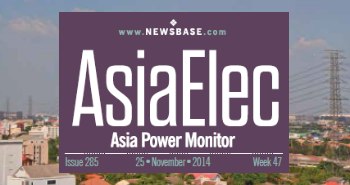AsiaElec: Japan’s geothermal energy boost

In the decade since the 2011 nuclear disaster at Japan’s Fukushima nuclear power plant (NPP), the world’s third-largest economy has been quietly expanding its geothermal capacity.
Data released by the nation’s Thermal and Nuclear Power Engineering Society indicate that the current scale of geothermal output still only accounts for a fraction of total power output – 0.3% – but on the back of the UN Climate Change Conference in Glasgow, UK, domestic industry analysts are pushing for increased investment in geothermal in the years ahead.
Expansion and investment into small-scale geothermal infrastructure and know-how have already taken place, with the total number of geothermal power plants now four times higher than when the March 11 earthquake rocked Fukushima.
At present, all of these plants are limited in output, although in the coming years, the national government has committed to a plan to double again the total number of such facilities, as one of the world’s most seismically active nations continues to tap areas near its 111 potentially active volcanoes.
It is thought that with Tokyo looking to reduce overall greenhouse gas (GHG) emissions by 46% by 2030, when compared to 2013 numbers, geothermal will now start to attract more and more investment as a non-solar, non-wind alternative.
Estimates show that Japan has in excess of 23 GW in annual geothermal generation capacity, thought to be the third-largest geothermal potential in the world after the US and Indonesia, two other nations on the infamous Pacific Ring of Fire.
Current figures indicate that output has been hovering around the 0.5-GW level in recent years despite increasing numbers of power plants, due to a recent lack of governmental interest in the industry and issues with FiTs.
Cabinet support for upgrading and increasing geothermal output will now be seen as crucial to boosting the nation’s 92 current facilities in 70 locations across Japan.
Just a decade ago there were only 20 geothermal generation units at 17 sites in Japan.
With generation from geothermal sources more reliable than both solar and wind, the industry has focused much of its attention in Japan on Kyushu, the southernmost of the large islands making up the 3,000-km archipelago.
Tohoku, too, a huge area of open plains and precipitous mountains west and north of the Fukushima NPP, 250 km north of Tokyo, is another area being prospected for more geothermal potential.
The largest obstacle to date in expanding geothermal across Japan has been the nation’s highly restricted FiT policy covering renewable energy.
Now, however, with the first large-scale geothermal plant in Japan in its third year of operation in Tohoku – the Wasabizawa Geothermal Power Plant, but still only producing 46 MW – liberalisation of FiT policy is being seen as the key to expanding overall geothermal capacity.
At present, Japanese FiT regulations date back to 2012, and have seen scant modification since.
Current rules limit power purchase agreements (PPAs) to generators with hard-to-achieve government certification, but with PV plants much cheaper to install and operate, early interest in geothermal installations fell away as solar boomed.
Only recently, with large swathes of northern Japan in particular already taken up by solar farms, has the geothermal option started to be considered once more as requiring limited acreage to set up, but offering potentially high return options on infrastructure laid down.
As such, a trio of new geothermal plants are expected to come into operation by 2030, across Tohoku – each with a 15-MW capacity. When added to existing and other smaller-scale projects, the regional output is expected to surpass 320 MW.
And while this is still relative small-fry when looking at overall figures, other sites are known to be in the early stages of planning and development as Japan looks underground to maintain energy requirements – and keep promises made at COP26.



Follow us online